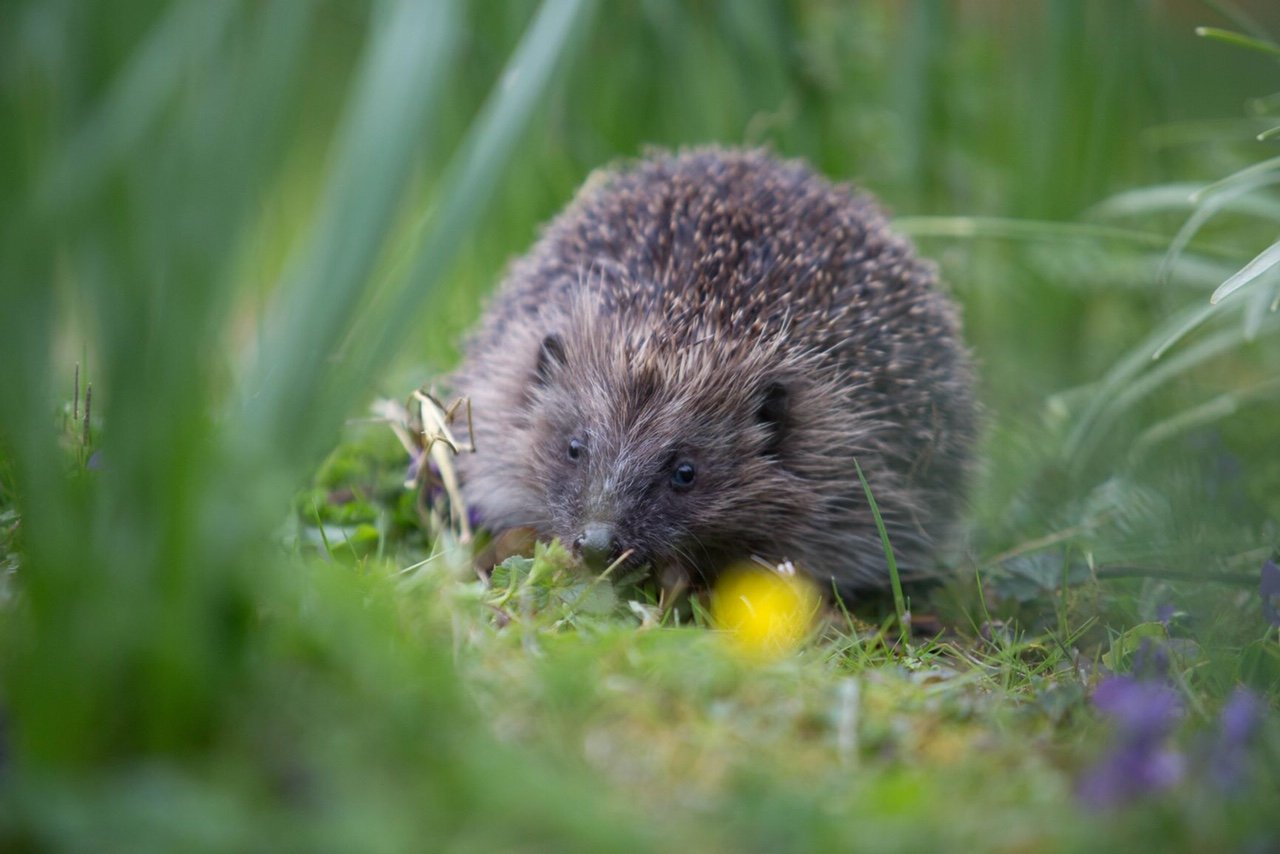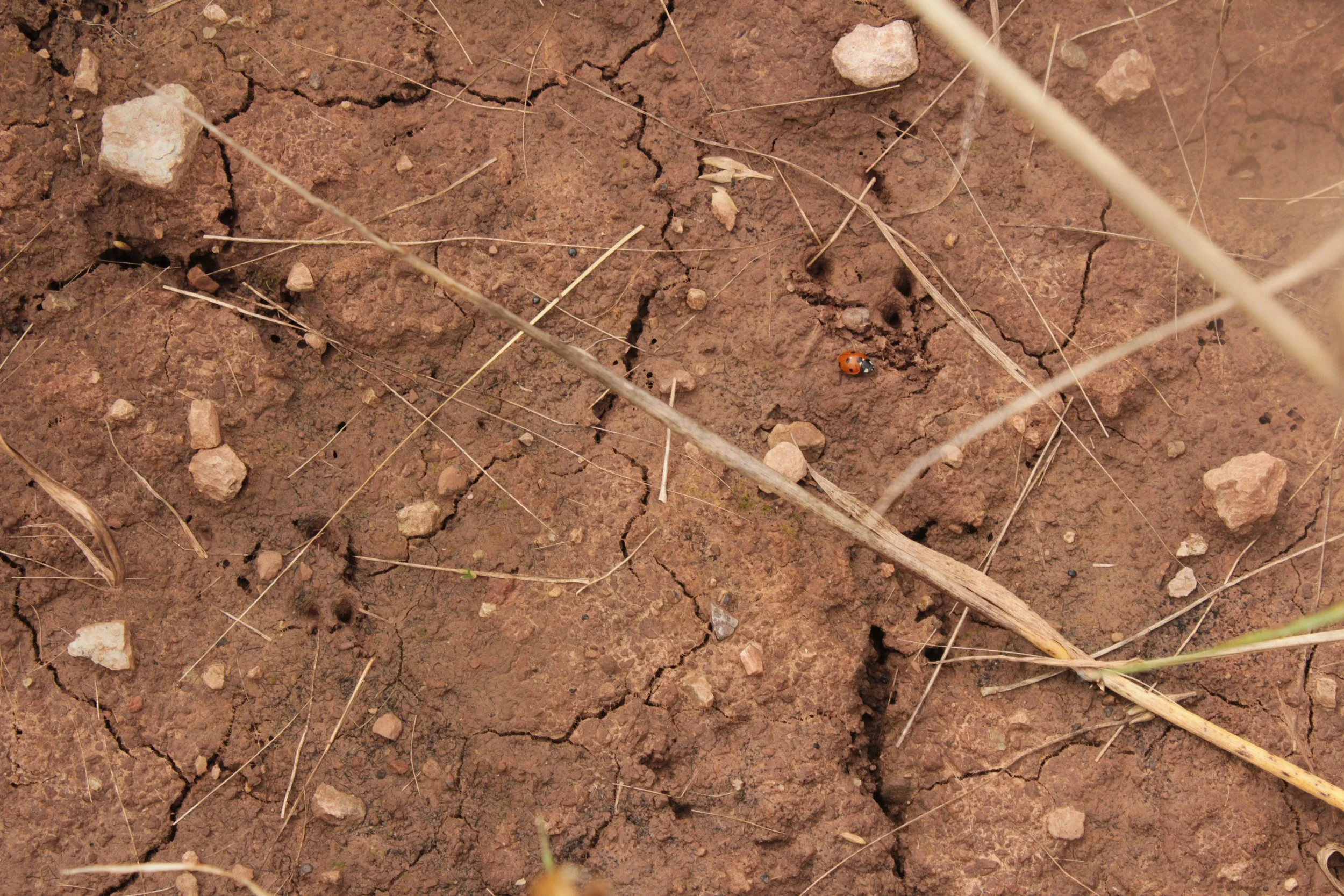Home / British mammals / European hedgehog
European hedgehog
Scientific name: Erinaceus europaeus
“The fox knows many things, but the hedgehog knows one big thing”
- Archilochus
Hedgehogs are the UK's only native spiny mammals – bearing between 5000 and 7000 spines! It is hard to imagine our environment without these iconic insectivores, however hedgehogs are becoming increasingly less common in Great Britain thanks to habitat loss and pesticides.
Taxonomy chart
Taxonomy chart: Animalia - Chordata - Mammalia - Eulipotyphla - Erinaceidae – Erinaceus - E. europaeus
Conservation status: UK Red List
GB: Vulnerable
England: Vulnerable
Scotland: Vulnerable
Wales: Vulnerable
Global: Near threatened
Summary
Diet: Invertebrates
Habitat: Hedgerows, woodland edges, parks, gardens
Size: Weight: up to 2kg. Size:150-300mm head and body length, dependant on age; tail: 10-20mm. Spines are up to 25cm.
Lifecycle: Usually 2-3 years in the wild, up to 10 years in captivity.
Conservation concerns: Loss and damage of habitat, pesticides on farmland and gardens, increasing development in urban areas, traffic accidents.
Terminology
Rut: The period with the greatest activity for hedgehogs, during their mating season in May-June.
Hoglet: A baby hedgehog.
Hibernacula: A winter nest hedgehogs build to keep them warm and dry during hibernation.
Hibernation: A state of inactivity by an animal, where they slow their heart rate and breathing and lower their body temperature and metabolism.
Geography
Hedgehogs are found almost everywhere in the UK since they can live in a variety of habitats, although they are absent from some Scottish islands, apart from where they have been introduced as a non-native species.
Hedgehogs live in woodland, hedgerows, farmland, parks and gardens.
Biology
Hedgehogs have a length of 15-30cm, and their tails are 1-2cm. They can weigh up to 2kg and have an average lifespan of 2-3 years. The spines on a hedgehog (which are made of keratin hairs) are 25mm long. Hedgehogs usually have between 5000 and 7000 spines, which act as a defence against potential predators, and they shed and grow spines throughout their life. The face, chest, belly, throat and legs of a hedgehog are not covered in these spines, but instead in a coarse, grey-brown fur.
Hedgehogs live solitary lifestyles and only come together to mate. They reach sexual maturity around 12 months old, and their mating season is between April and September. However, the period in which they are the most active, called the rut, happens in May and June. Female hedgehogs usually have a gestation period of around a month. The litters consist of three to seven hoglets, and these will spend up to six weeks with their mother. They are independent by about eight weeks. In the wild, hedgehogs usually live for 2-3 years, but they have been known to live up to seven years.
Ecology
Hedgehogs mostly eat invertebrates, particularly beetles, earwigs, earthworms and caterpillars. They also eat carrion and eggs of ground-nesting birds. In urban environments, hedgehogs will eat food left out for them by humans such as cat food and leftovers.
Hedgehogs have two broad categories of nests: summer and winter (the latter also known as hibernacula). Summer nests are more flimsy and less well insulated than hibernacula and tend to be loosely constructed balls of grass and leaves. These summer nests are sometimes further distinguished into daytime resting nests and breeding nests. The breeding nests tend to be larger, since this is where the hoglets will be nursed. Hibernacula are more tightly woven structures, have walls of several centimetres thick, and are composed of carefully placed plant material. They are waterproof and very well insulated. The hibernacula are used during hibernation.
During the winter months (usually October to April but it depends on the temperatures), hedgehogs hibernate in their hibernacula. They do this so they can survive long periods without eating. However, they will still get up occasionally to get a snack and go to the toilet. If temperatures drop too much and there is a risk of freezing, their bodies will wake up so the hedgehog can find a more suitable hibernation place.
Hedgehogs are nocturnal and sleep in their nest during the day to avoid being disturbed or predation. If a hedgehog is asleep or resting out of its nest, there might be something wrong.
Hedgehogs are an important indicator species for healthy landscapes. Since they feed on a wide variety of invertebrates, a decline in hedgehogs can be an indicator that there is a decline in biodiversity and soil health. Hedgehogs benefit from a connected landscape allowing them to travel without losing access to cover from hedgerows or bushes, and invertebrate-rich habitat such as leaf litter and long grasses.
Conservation
Hedgehogs are vulnerable in Great Britain and near threatened globally. They are protected in the UK under the Wildlife and Countryside Act 1981 and are considered a priority species under the UK Post-2010 Biodiversity Framework.
Hedgehog numbers are declining at an increased speed. Their biggest threats are loss and damage of suitable habitats, such as hedgerows and woodland. The disappearance of these means they cannot get the food they need and do not have refuge from predation. The use of pesticides on farms and gardens also impacts the food source for hedgehogs. In urban environments, the use of strong fences, loss of greenery and increasing developments also negatively impacts hedgehog populations. Traffic is also a problem, with hundreds of thousands of hedgehogs being killed by cars on a yearly basis.
History
Hedgehogs have been in mainland Britain since the last Ice Age. This iconic species has a strong representation in literature. They appear as Mrs Tiggy-Winkle, a washerwoman in Beatrix Potter’s stories. In Alice’s Adventures in Wonderland by Lewis Caroll (1865) hedgehogs are used as balls in the Red Queen’s croquet match.
Although not in taste now, hedgehogs used to feature in recipes! John Farley has a recipe calling for hedgehog meat with almonds in his cookbook, The London Art of Cookery (1783). Some travelling communities also include hedgehog in their traditional recipes. Here they roll hedgehogs in clag and bake them in a fire.
In folklore, it was believed that hedgehogs drank milk straight from the cows’ udders. Ironically, hedgehogs are lactose-intolerant, so they would never seek out milk. If you do decide to leave something to drink for hedgehogs, leave them water to drink. In Medieval times, it was believed hedgehogs could carry fruit on their spines. Again, this is not the case, since when they walk around, hedgehogs have their spines flattened.
How to identify
Footprints: Hedgehog tracks are best identified by using a footprint tunnel. They are five-toed, with a sharp claw on the end. They are 28mm in width and 25mm in length. To record footprints, a tunnel can be placed alongside hedgerows and in gardens. A footprint guide and protocol are both available from The Mammal Society.
Droppings: They can be found in grassland and farmland, and in people’s gardens. They are crinkly, often studded with shiny fragments due to their diet of insects. Variable size, 15-50mm long, 8-10mm thick. Colour: blue-black. Smell: Sweet, hint of linseed oil.
Feeding signs: Usually by sounds instead of sight. Huffing and puffing can be heard while they search for food, as well as hissing or snarling.
Nests: found on the ground, well-concealed under bushes and the like.
Surveying period: April - October
Recommended reading
Mammal Society blog: Hedgehogs: predators and the truths behind their decline
Woodland Trust Guide: how to make a hedgehog house for your garden
Hedgehog Street: 10 tips to help hedgehogs
The British Hedgehog Preservation Society
The Mammal Society: hedgehog field sign fact sheet
How are roads impacting our hedgehogs? - PTES UK mammal project
https://mammal.org.uk/position-statements/feeding-mammals-guidance
Frequently asked questions
-
Yes, occasionally, as they are one of the few predators in the UK that can unroll them when they are curled up and protected by their spines. However, it is not common behaviour, and not the cause of hedgehog decline. Hedgehogs and badgers have co-existed for thousands of years, and for much of that time badger numbers were considerably higher than they are now.
-
Research has shown that hedgehogs are partially resistant to snake venom. However, a bite to the face or leg would still make them ill and potentially kill them. In the UK there is only one venomous snake, the adder, which cannot bite a hedgehog through its spines.
-
The name started beingused around 1450 and is derived from the Middle English heyghoge, from heyg, hegge 'hedge', because it can be usually found near hedgerows, and hoge, hogge 'hog', because of its piglike snout.
-
Wild hedgehogs (like any other wild animal) can carry parasites and diseases that may be harmful to humans and the pets we keep. It is recommended to not attempt to pet or handle a hedgehog or any other wild animal.
-
If a hedgehog is using your garden at night, it is best to leave the hedgehog undisturbed, as your garden most likely is a safe haven for this animal and a good way to support declining hedgehog populations. You should leave piles of leaf litter and twigs undisturbed and check any piles of garden waste before starting a bonfire, as well as avoid using slug pellets or rat poison. In summer, you might see hedgehogs out during the daytime. If so, this is likely a mother hedgehog looking to find food or water. If you see a hedgehog sleeping during the day out of its nest, you should contact wildlife support since something may be wrong with the animal.
Identify sounds
Heard a curious animal sound but no idea whose making it?
Wildlife identification FAQ
Still not sure what you’ve found? Head over to our FAQ for an answer.






